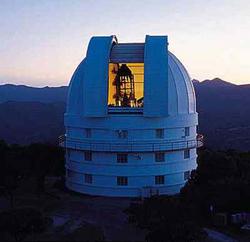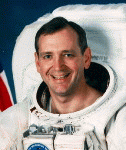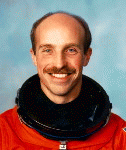
M. Harris/McDonald Observatory
A Trip to the Observatory - Transcript
I'm Travis Metcalfe, an astronomer at the National Center for Atmospheric Research in Boulder, Colorado. I made this short video for anyone who's ever wondered what it's like to take a trip to the observatory and use the telescopes. In early 2006, I was granted 7 nights of observing time on one of the telescopes at McDonald Observatory in west Texas, as part of my research to learn about the insides of stars.
My trip began with a flight out of Denver, taking me over the yellow prairies of Colorado and into the beautiful city of Austin, Texas, where I picked up a colleague at the University.
From Austin, it takes about 8 hours to drive out to the observatory. The trip takes us through land that used to be littered with oil pumps as far as the eye could see. But in the past few years, the drilling machines have quietly been replaced with vast fields of wind turbines. It's now one of my favorite parts of the drive, since I can't help but think how this renewable energy source ultimately comes from our own star, the Sun.
Not long after passing the wind farms, the landscape starts to get more mountainous. Most observatories are built in dry remote locations, far from the city lights, and usually at higher elevations to get above as much of the Earth's atmosphere as possible.
Just down the mountain from the telescope domes, we check in to the Astronomer's Lodge, where we will spend most of each day sleeping in small but comfortable guest rooms with black metal window shades that normally hide the beautiful views.
The kitchen staff prepare hot cafeteria-style meals for dinner every day, and keep a refrigerator well stocked with items for breakfast and night-lunch. During dinner, the astronomers sit together and talk about their individual research projects, the quality of the weather and atmosphere on the previous night, and the prospects for continuing to have good observing conditions.
After dinner, we start our workday by walking just up the hill to the dome. In this case, we will be using the first telescope to be built on this mountain, back in the 1930's.
One of the things I like best about McDonald Observatory is that astronomers get to run the telescopes themselves. Most of the larger observatories now have trained technicians who operate the telescope and the dome, moving from one target to the next at the request of the astronomer. Here we get the chance to be closer to the sky, moving the telescope from a console situated on the floor inside the dome. The tilted mount is aligned with the rotation axis of the Earth, so a small motor allows us to follow the stars as they move across the sky. Our instrument is basically a high-quality digital camera, mounted at the top end of the telescope.
When the Sun finally sets, we stroll around the catwalk to check the weather. It's a clear, beautiful night in west Texas.
Although we will occasionally go outside to check for clouds during the night, we will spend most of our time in the control room, just next to the dome floor. For the next 10 hours we will be sitting in front of these computer screens, listening to music, and talking about our science.
Once we point the telescope at our target, we begin taking digital pictures of a small patch of the sky that contains only a few stars. We take a new picture every 10 seconds, and use our own custom-made software to analyze the images. This allows us to monitor the effect of the atmosphere, which causes the images to be slightly blurred. We also monitor how well the telescope is focused, so we can make small changes to improve the quality of the observations.
Our research project requires that we monitor the amount of light coming from our target throughout the course of the evening. We see the star emit more light, then less, then more, in a very regular pattern. By analyzing this pattern, we will learn about the interior of the star.
The following afternoon, we take another quick look at the observations to see whether we need to change anything the next night to accomplish our scientific goals. If there's any time left before dinner, we might be able to spend a few minutes enjoying the beautiful scenery from the top of this mountain.
After a week at the telescope, if we are reasonably lucky with the weather, we will have enough data to analyze and interpret back in Boulder for the next 6 months or so.
A Trip to the Observatory - Watch the Movie












